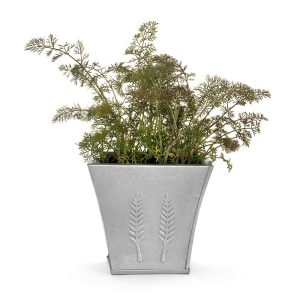Description
Rosmarinus officinalis ‘Sudbury Blue’ is a cultivar of the common rosemary (Rosmarinus officinalis) that is known for its strong and distinctive aroma and flavor, its blue-gray-green leaves and its blue flowers. It is a perennial herb that is native to the Mediterranean region, but it is now widely cultivated around the world. The plant is commonly used in Mediterranean cuisine to flavor meats, fish, and vegetables, and it also has medicinal properties. It can also be used in landscaping and as an ornamental plant. The cultivar ‘Sudbury Blue’ is a particularly attractive and hardy variety, with a compact and bushy habit.
Key Facts
- Common Name(s):Sudbury Blue Rosemary
- Hardiness:Fully hardy
- How big will I get? Rosmarinus officinalis ‘Sudbury Blue’ can grow to a height of 1m and a spread of 1m.
- Did You Know That:In the Mediterranean rosemary is associated with remembrance, and is commonly used in weddings, funerals, and other ceremonies?
Plant Calendar
A rough guide to how this plant will change through the year.
| Jan | Feb | Mar | Apr | May | June | July | Aug | Sept | Oct | Nov | Dec | |
| Flowering Time |  |
 |
 |
|||||||||
| Foliage Colour |  |
 |
 |
 |
 |
 |
 |
 |
 |
 |
 |
 |
| J | F | M | A | M | J | J | A | S | O | N | D |
 |
 |
 |
|||||||||
 |
 |
 |
 |
 |
 |
 |
 |
 |
 |
 |
 |
Care Guide

Soil Requirements
Rosmarinus officinalis ‘Sudbury Blue’ prefers soil with good drainage and does not tolerate standing water. This plant can grow in soil with a wide range of pH levels, it is not picky about the pH level of the soil.

Best Position
Rosmarinus officinalis ‘Sudbury Blue’ can handle either an exposed or a sheltered position and can cope with either full sun or partial shade.

Maintenance
Rosmarinus officinalis ‘Sudbury Blue’ is fairly low maintenance and doesn’t require any pruning.

Pest, Diseases and Wildlife
Rosmarinus officinalis ‘Sudbury Blue’ is generally pest free, and it tends not to have problems with diseases. It is also known to attract bees. It is not considered to be toxic.
![Rosmarinus officinalis 'Sudbury Blue' [Rosemary]](https://leafwise.co.uk/wp-content/uploads/2022/10/Rosmarinus-officinalis-Sudbury-Blue-Rosemary.jpg)




